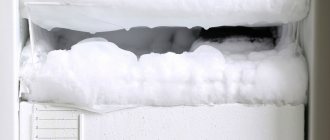Infection with parasites is fraught with serious consequences: general intoxication of the body, poor health, disruption of the functioning of internal organs and systems.
Scraping for an eggworm is a sure way to determine the presence or absence of helminths in your body. The method is distinguished by its reliability, simplicity, and speed of obtaining results.
What to do in such a situation? To get started, we recommend reading this article. This article describes in detail methods of controlling parasites. We also recommend that you consult a specialist. Read the article >>>
You can take a scraping for worm eggs in a private diagnostic laboratory, for example, Invintro, as well as in a public clinic. Today we will talk about the features of taking scrapings for an eggworm. From the following article you will learn how to take the test correctly, as well as how to store stool for eggworm analysis in the evening.
What determines a stool test for worm eggs?
According to the World Health Organization (WHO), about 90% of the world's population suffers from parasitic diseases. The most common parasites are roundworms and pinworms. Based on this data, detecting and treating parasitic diseases is a very important step towards your health.
Worms are parasitic worms that live in the human body. The life cycle of many worms is designed in such a way that their eggs must be released into the external environment (this is a necessary condition for their maturation). The eggs leave the human body together with feces. Therefore, with helminthic infestation, the probability of detecting worm eggs in feces is quite high.
Normally, human feces should not contain any traces of parasites (eggs, larvae, worms and parts of parasites). In order to obtain the most reliable results, it is necessary to conduct 2-4 stool tests for helminth eggs with intervals of several days.
The three most common groups of parasites are:
- nematodes or roundworms: (these include: Roundworms, Whipworms, Necators, Duodenal Crookheads);
Roundworms (nematodes)
- trematodes or flukes: (these include: Schistosomes, Cat flukes, Liver flukes, Paradoxical leukochloridia);
- cestodes or tapeworms: (these include: Bovine tapeworm, Pork tapeworm, Broad tapeworm).
Tapeworms (cestodes)
When stool is not suitable for collection
It is not always possible to collect feces for research. There are situations when it is better to wait with such a procedure, otherwise the analysis results will be distorted.
You cannot donate stool immediately after an enema or X-ray contrast examination of the digestive tract. It is recommended to wait at least 48 hours. If a person takes sorbents, uses rectal suppositories or laxatives, stool collection is possible no earlier than a few days (23 days) after such manipulations.
Do not collect feces during the menstrual period
Types of stool tests
Modern medicine offers several methods by which feces are examined for worm eggs. Which one needs to be done and how to take it, the attending physician will explain. It all depends on the final goal.
A stool test for parasites can be prescribed either general or selective. You can also conduct a study of feces for the presence of intestinal pathology and changes in microflora. When a doctor recommends a stool test, he issues a special form (referral), which already indicates what exactly to look for.
Each type of research has its own characteristics, which also apply to preparation for them. Even how long a stool sample can be stored matters.
Can it go in the freezer?
Storing stool for analysis in the freezer, according to many experts, will lead to distortion of the results of the study of the patient’s condition. In conditions of negative temperatures, many biochemical substances change their formula. This nullifies the results of the study. But there are certain diagnostic methods that allow this method of storage. You need to clarify the rules for saving fecal matter for a specific type of study in the clinic where it will be carried out.
How to collect
Specialists from the laboratory recommend remembering and adhering to the following rules. It is strictly forbidden to do enemas 3 days before the tests. Only naturally obtained biomaterial is suitable for research. Before collecting feces, it is recommended to stop taking medications, including sorbents and laxatives, for 3 days.
If the patient takes any medications on an ongoing basis, the attending physician must be notified about this. The day before the procedure, it is prohibited to use rectal suppositories. When referred for some tests, the patient will have to adhere to a special diet for 7 days.
Storage containers
As a rule, it involves avoiding fatty and fried foods, pickles and smoked foods, and foods with a lot of spices and seasonings. These days, the basis of the patient’s diet should be fermented milk products and vegetables. If you are scheduled to take an occult blood test, you must limit your intake of foods containing iron.
To ensure that the analysis result is as accurate as possible, it is important to follow these rules:
- Feces are collected for analysis only after urination. If urine gets into the sample, the result may be distorted. This rule applies to adults and children.
- Before collection, it is necessary to carry out hygiene of the intimate area, including the anus. The procedure is carried out using warm water and regular soap.
- Defecation is carried out over a clean and dry container, after which part of the sample is transferred to a special sterile container. A sample container can be purchased at a pharmacy. It usually comes with a sterile plastic spoon.
- If biomaterial is collected from children, the sample can be collected directly from the diaper.
How to collect stool for examination in infants?
The type of analysis determines everything: for some it should only be fresh, for others it is permissible to store it from evening until morning.
Features of taking material for various studies:
- If an occult blood test is expected, the child should not take medications with iron, iodine or bromine compounds. If he is breastfed, then these requirements must be met by the nursing mother.
- If a helminth is noticed in the child’s feces, it must be placed in a container with feces. To determine the eggs, material continues to be collected over the next 2-3 days.
- When checking newborns for dysbiosis for bacterial culture, feces are collected with special care. This is a microbiological analysis, so the stool container requires a sterile one. No urine is allowed in feces. If blood streaks or accumulations of mucus are noticed in the stool, they are also placed in a container sent for analysis.
- To test stool for Giardia, it is important to provide fresh material. This means that the material must be taken to the research center immediately after receiving it.
- The coprogram allows the collection of feces from the child in the evening. I keep it in the refrigerator and deliver it the next morning.
Collecting the required amount of feces from a baby is not so easy, sometimes it takes several days. After all, it is not always possible to record the moment a baby has a bowel movement. Do not despair: with proper collection and storage of biological material, the analyzes will be reliable. Based on them, the doctor will prescribe the appropriate treatment. You can store shelled walnuts for a long time at home in an airtight container even when, Meat belongs to the category of perishable products, and it can be stored for up to two years. When too many dishes are prepared at once It was not possible to cope with them, it is necessary. Flowering plants are designed to decorate a person’s life, but they themselves are short-lived. How to make chrysanthemums
How to store a sample before the laboratory
If the biomaterial was collected at night before bedtime, the patient must adhere to certain rules that will help preserve the sample until the morning.
If possible, defecation should be done as late as possible so that the number of hours between bowel movement and delivery of the collected material to the laboratory is minimal.
You also need to remember the following:
- To maximize the shelf life of the sample, it is recommended to collect biomaterial in a special sterile container, which is sold in pharmacies. It is better to open such a container immediately before collecting the material. After this, the container must be tightly closed with a lid.
- How long a sample can be stored depends on the type of test. The maximum shelf life of feces is 8 hours. For some tests, for example, for enterobiasis, the shelf life is even shorter - up to 5-6 hours. There is no point in storing the sample longer than this time, since the result will be unreliable.
- It is recommended to keep feces collected in the evening in the refrigerator. Permissible temperature is from -4 to +8 degrees. In this case, the container cannot be placed on the lower and especially on the upper shelves. It is best to place the container on the middle shelf of the refrigerator, since this is where the proper temperature is maintained.
It is important to know
To obtain an accurate research result, it is necessary to correctly collect the material and know how to store stool for analysis. The requirements depend on which diagnostic method is used.
To obtain the most accurate research data, it is better to donate stool directly after bowel movement. It is recommended to do all this in the morning.
However, it often happens that emptying occurs in the evening or at night and feces must be stored until the morning. The ideal location for this biological material until the next day is in the refrigerator.
Material for biochemical research can be stored in the freezer.
Features of storage in the refrigerator
Many people are interested in how long feces can be stored at minimum temperatures. Experts recommend keeping it in the refrigerator for no more than eight, and preferably six, hours.
For different types of research, different deadlines are allowed:
- For helminths and their eggs – from 5 to 8 hours.
- For blood (occult) – from 5 to 6 hours.
- For coprogram – from 6 to 8 hours.
- For enterobiasis – from 5 to 8 hours.
It is not allowed to store feces for long periods of time for research.
To keep feces in the refrigerator in optimal condition, it is important that the temperature is no higher than eight and no lower than four degrees. For the occult blood test, the temperature should not exceed six degrees.
Store feces in a sealed container, placing it on the middle shelf.
How to save feces collected in the evening until the morning
If the feces were collected in the evening or night before the analysis, the container with the material is placed in the refrigerator.
It is not recommended to place containers with feces on the lower or upper shelf; the side ones are not suitable for this either. The middle shelf of the refrigerator is the optimal place to store feces.
No more than eight hours should pass from the moment the material was collected until it is submitted for diagnostics.
After this time, the material will no longer be suitable. Therefore, it is important to take into account the travel time to the clinic in these eight hours. If it takes about 60 minutes, then you can store the mass in the refrigerator for no longer than seven hours.
In the laboratory they indicate whose stool is being tested, what the person’s stool was like (no peculiarities, liquid, hard, with a laxative). It is also important to indicate the age so that the specialist can understand whether the material for analysis was taken from an adult or a child.
Preservation of feces for different types of diagnostics
The shelf life also depends on what kind of research needs to be done:
- Coprogram. Feces must be placed in a clean container (two teaspoons is the optimal volume of material for such diagnostics). They must be submitted for analysis within five hours. It is important that laxatives and cleansing enemas are not used before collecting stool.
- For helminths, E. coli, rotavirus and protozoa. Place the material in a container and hand it in within three hours.
- Biochemical study (for dysbacteriosis). It is advisable to deliver the feces to the laboratory on the day of delivery. If this is not possible, you can keep the collected material in the freezer. It should not be defrosted. Information about the type of stool (constipation or diarrhea, with the use of laxatives, without any features) is provided with the sample.
- For blood (hidden). When collecting stool, do not use medications with laxative effects or enemas. It is recommended to deliver the mass to the laboratory within five hours.
- Microbiological research. It is advisable to submit the material after collection within 180 minutes.
- For enterobiasis (to identify pinworms and taeniids). They donate not stool, but a smear taken from the folds of the anus. The wand used to take the test must be returned within four hours.
- For carbohydrates. The mass should be given no later than six hours from the moment of collection in order to obtain the most reliable result.
A more accurate interpretation of any type of analysis can be obtained if the stool is sent for research as quickly as possible.
Alternative options
If it is not possible to collect fresh stool or store it in the refrigerator, you can use alternative methods of collecting material for research. Instead of using containers, in some cases you can take a scraping from the rectal mucosa, for example, when testing for enterobiasis. The material is collected with a cotton swab and then placed in a closed test tube. The sample is delivered to the laboratory within the next two hours.
Unfortunately, scraping the contents of the rectum does not reveal all diseases of the digestive tract. In some cases, the usual sample collection in a container cannot be avoided. You will receive accurate information about the study from your attending physician.
Read the article about how you can store a urine test
Differences in storing feces of an adult and a child
Children are usually unpredictable, and the exact time when they will have a bowel movement is very difficult to determine. Therefore, if parents are lucky enough to receive biological material in the morning, it should be immediately taken to the laboratory.
The permissible interval between collection and delivery of feces to the clinic is from one to three hours.
A child’s feces, collected the evening before delivery to the laboratory, can be stored in the refrigerator (at 4-6 degrees Celsius) for no more than eight hours. If the time period from collection to delivery exceeds 480 minutes, the material will be unsuitable for research.
An adult can store their feces for testing for up to three hours. If the material is in the refrigerator, then it can be handed in for another two days (but not later!).
However, it is important to understand that long-term storage may result in inaccurate results. Therefore, it is best to submit such material to the laboratory within six hours after collection. After this time, its biological properties begin to change .
Analysis of feces is reliable only if the material was correctly collected and all storage conditions were met. In addition, it is important to remember that there are some differences depending on the type of analysis. Therefore, it is important to familiarize yourself with the recommendations of specialists regarding the collection and storage of material.
Why do you need to follow the rules?
Many people freeze stool or leave it in the refrigerator for more than 8 hours and get incorrect test results. Why is this happening? During long-term storage, various microorganisms begin to multiply in the collected sample. Some bacteria, on the contrary, die during storage. The chemical properties of the intestinal contents also change. All this ultimately leads to incorrect interpretation of results and incorrect diagnoses.
Violation of the technique for collecting material for dysbacteriosis or identifying specific pathogenic microorganisms can be very critical. Long-term storage and especially freezing of the sample will lead to the inoculation of absolutely incredible combinations of bacteria. In the best case, the doctor will send the patient for a second examination, in the worst case, he will begin the wrong treatment. To avoid this, you should follow all the details of collecting material and take into account the peculiarities of storing samples for various studies.
It is possible to defeat parasites!
Antiparasitic Complex® - Reliable and safe removal of parasites in 21 days!
- The composition includes only natural ingredients;
- Does not cause side effects;
- Absolutely safe;
- Protects the liver, heart, lungs, stomach, skin from parasites;
- Removes waste products of parasites from the body.
- Effectively destroys most types of helminths in 21 days.
There is now a preferential program for free packaging. Read expert opinion.
Read further:
Why take an enterobiasis test for a swimming pool certificate: rules, deadlines and instructions
Worms during pregnancy: what to do in the early stages, effects on the fetus, how to treat
Who do viruses belong to: bacteria or intracellular parasites?
How to effectively treat opisthorchiasis.
At what temperature do the eggs of worms (roundworms) and pinworms die?
Cucurbitin: what products contain it and which one has an effect on worms











